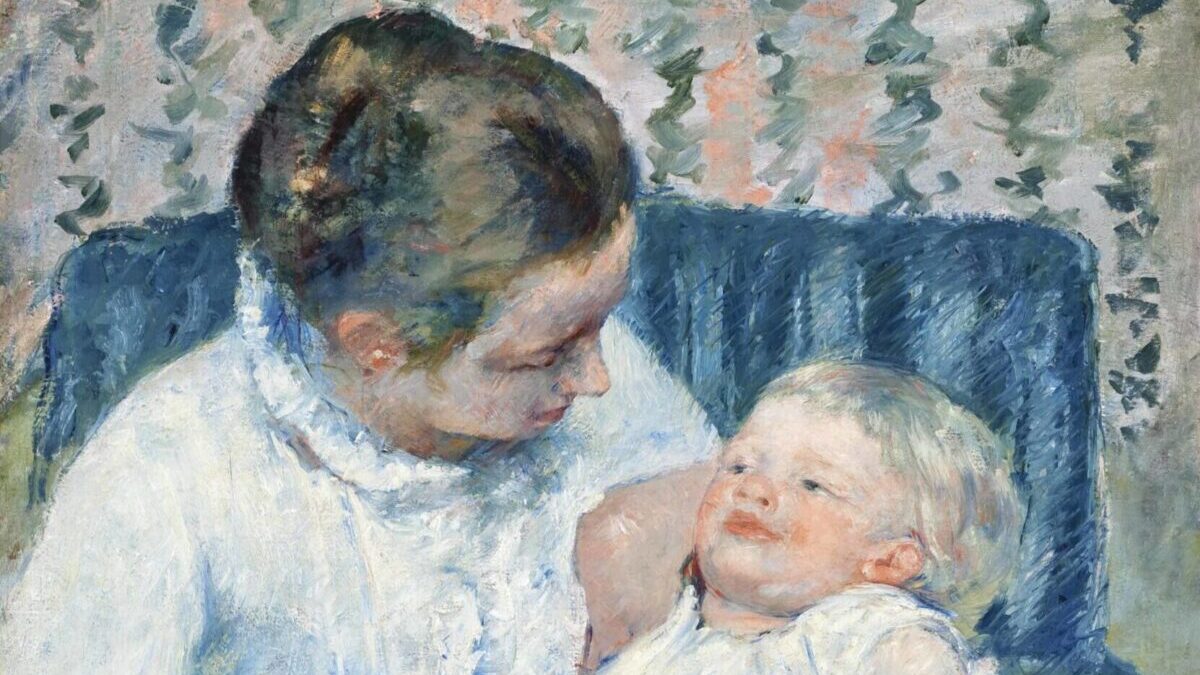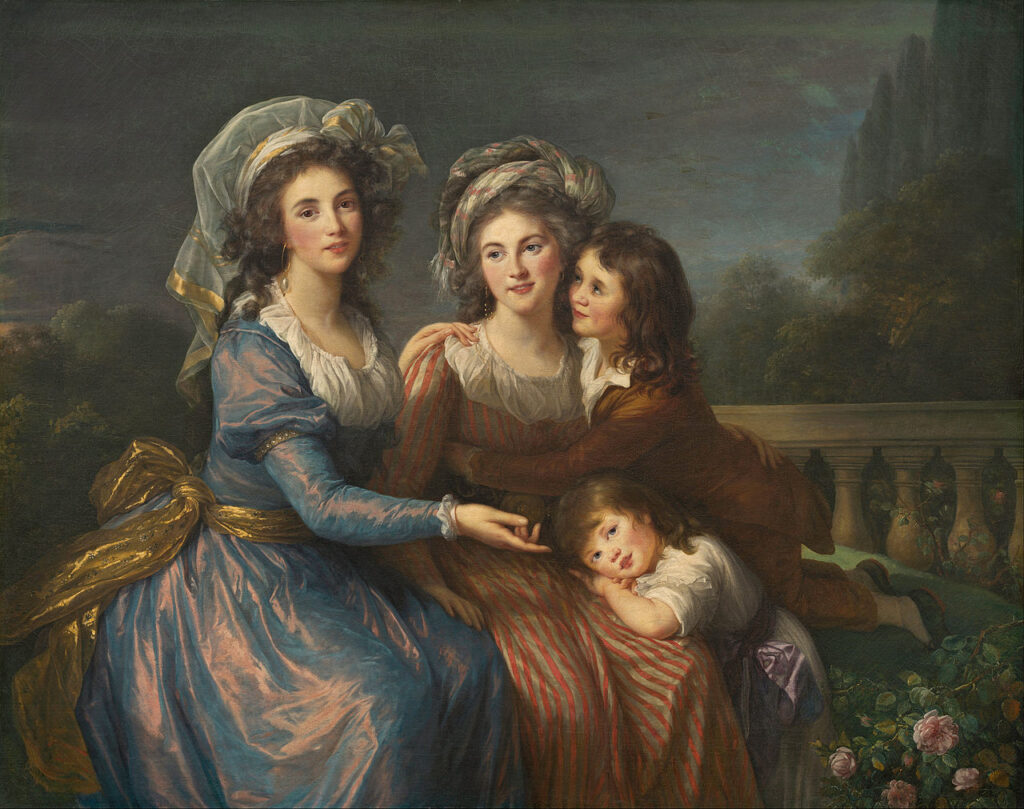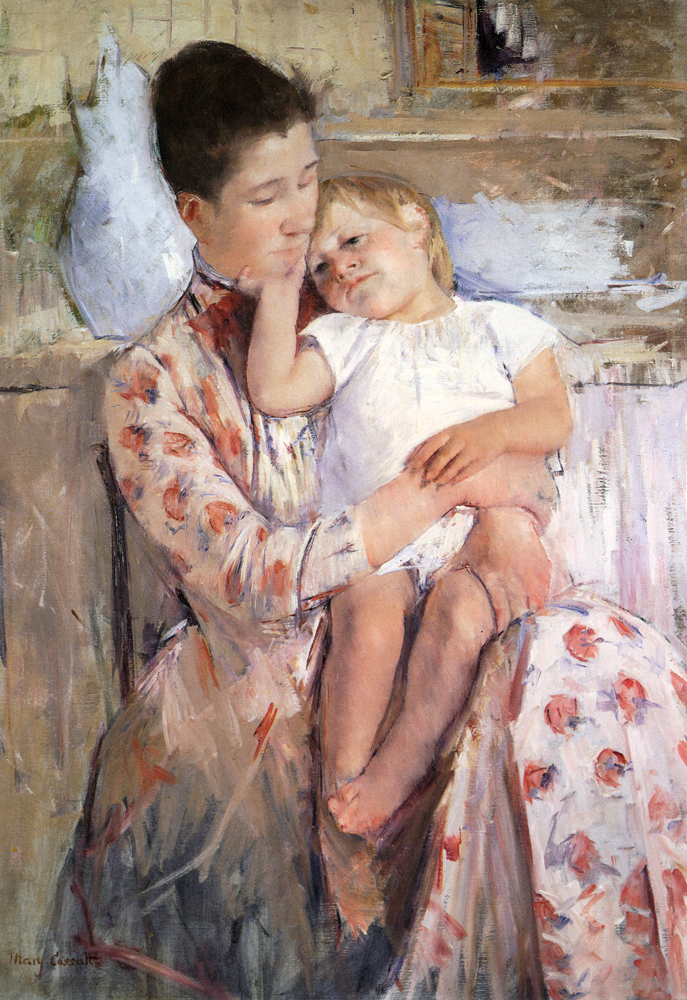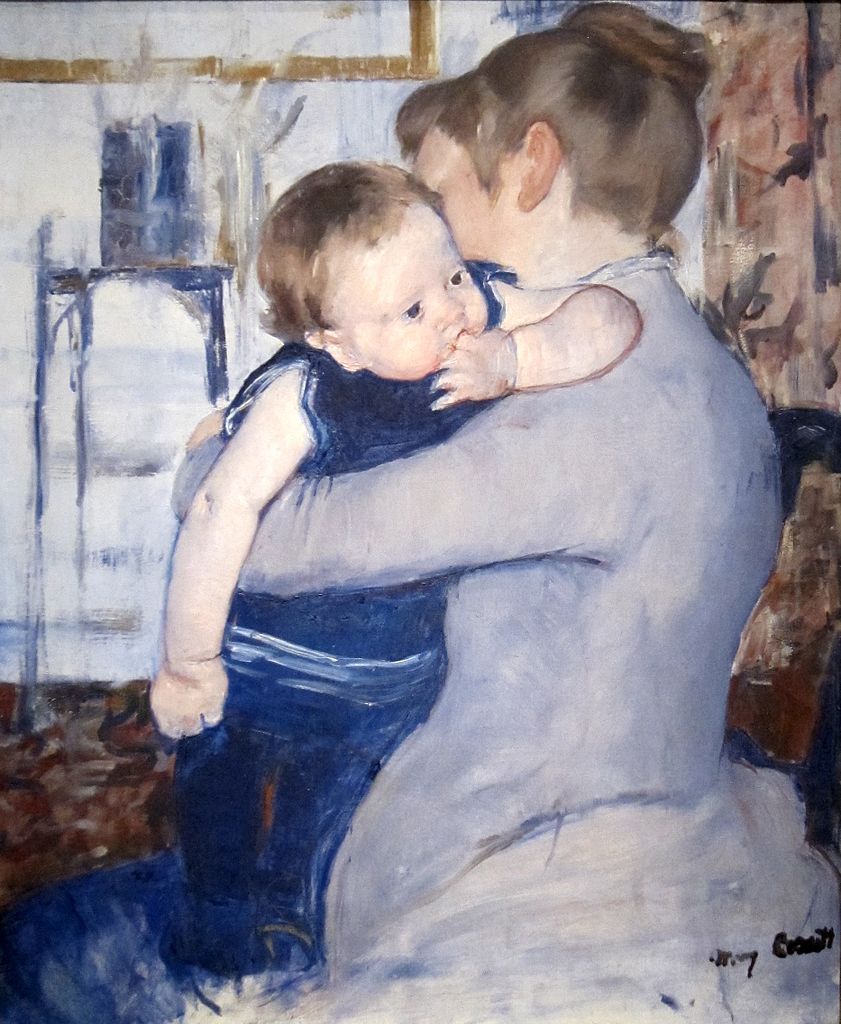Mother’s Day on Sunday is the perfect time to take a fresh look at the paintings, life, and legacy of Mary Cassatt. If you have time to make the trip to Richmond, there’s an excellent exhibit highlighting Cassatt’s work at the Virginia Museum of Fine Arts.
Full disclosure here: I am quite a Cassatt fan. While leading school tours as a docent at The National Gallery of Art, I love to delve into Cassatt’s work, especially “The Boating Party.” The painting makes the viewer feel as if they too are present in the rowboat. You almost can smell the sea air, feel the breeze gently flapping your clothes, and enjoy the warmth of the sun. With its deep blues and greens, flattened shapes, and unusual angles, the painting demonstrates the influence of Japanese prints, extremely popular in Paris in the late 1800s.
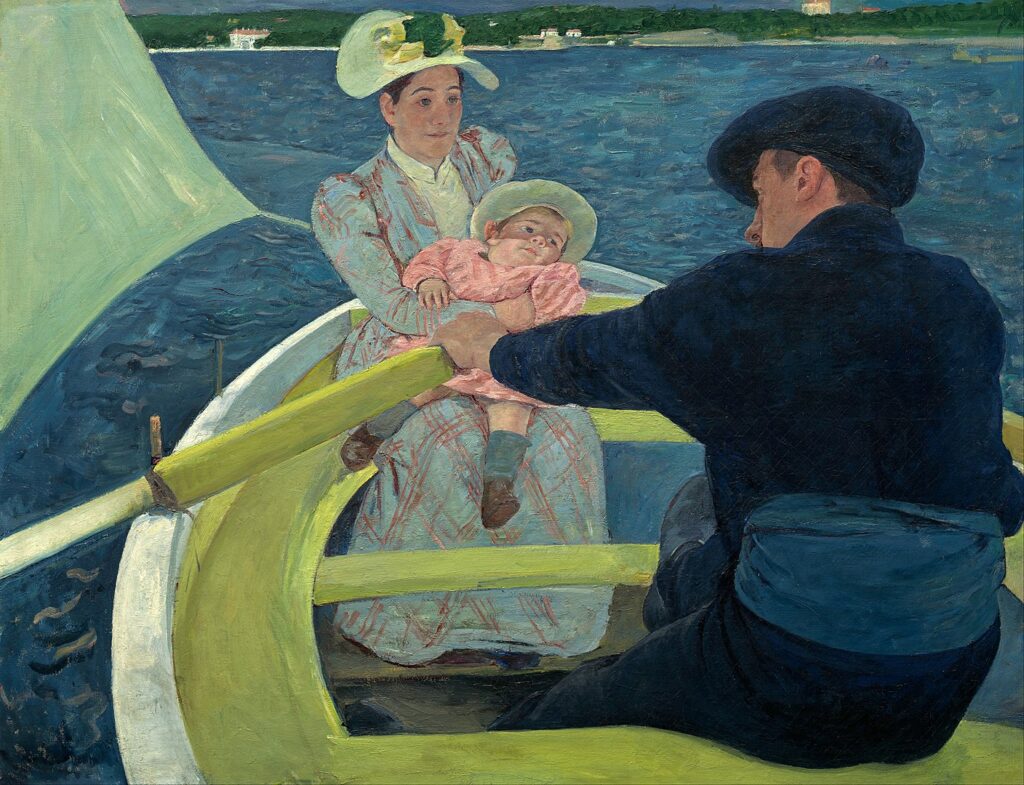
The City of Light is where Cassatt studied and settled, along with other significant American artists highlighted in the Richmond exhibit, “Whistler to Cassatt: American Painters in France,” including John Singer Sargent, Thomas Eakins, Frank Benson, Winslow Homer, and two of my particular favorites: Childe Hassam and the legendary teacher Robert Henri.
But it is the Cassatt works, including ten paintings from 1877 -1897, and six pastels executed before 1901, that captured my attention most.
As her sojourn in Paris shows, Cassatt’s story is nearly as impressive as her work. She was born in 1844 to a well-off Pennsylvania family that strongly believed in educating women. Following a childhood in which she and her family traveled to Europe, she convinced her parents, after five years of study at the Pennsylvania Academy of Fine Arts, to allow her to move to Paris to paint.
Working Around the All-Boys Club
The center of the modern art scene was very much of an all-boys club at the time of Cassatt’s arrival in 1865. Its premier school, Ecole des Beaux-Arts, did not accept female students. But Cassatt didn’t waste time grousing about not being permitted to sketch nude models with the men. Instead, she copied the Old Masters in prestigious museums like The Louvre, a training technique still practiced today, and studied in the studios of established painters.
Eventually her work caught the attention of Edgar Degas. Impressed with Cassatt’s ability to distill a moment in time on canvas, the renowned painter invited her to exhibit with the Impressionists in 1877, thus beginning a long, supportive, and intense friendship between the two artists.
Cassatt agreed to join the exhibition, but like Degas himself, came to dislike the label “Impressionist.” That brings me to the third admirable quality about Cassatt: her commitment to authenticity. In today’s vernacular we would say, “She knew who she was.”
During an era when the glamour, glare, and sophistication of the Paris art scene and nightlife drew painters like Henri de Toulouse-Lautrec and Degas, she stayed true to herself and her love of domestic life. Images of women and children became the artist’s specialty.
Original Portrayal of Motherhood
We see them in the Richmond show in two rooms dedicated to her work: serene, quiet scenes of ladies reading or sewing, and youngsters lost in the wonderment of play. Most moving, however, are Cassatt’s canvases of mothers and children, which capture moments of warmth and tenderness that have become icons of great art.
In addition to her undeniable skill, what makes Cassatt’s mother and child paintings unique is her turn away from the manner in which these subjects were traditionally painted. Instead of straight-on family portraits, she captured her sitters engaged with one another in a cinematic moment.
Take her predecessor, French painter Elisabeth Louise Vigée Le Brun. In her famous work, “The Marquise de Pezay, and the Marquise de Rouge With Her Sons Alexis and Adrien,” (1787), three of the four sitters stare out toward the viewer. There’s no sense of interaction or connection.
Skip ahead 100-plus years to her near-contemporary and fellow American portraitist John Singer Sargent. “Mrs. Cazalet and Her Children, Edward and Victor,” painted in 1901, and “Mrs. Fiske Warren and Her Daughter” (1903), are beautifully executed, but both feature the sitters staring straight ahead, like a typical family photo.
Engaging Style
Cassatt’s work, by contrast, captures the private interaction between mother and child. Instead of serving as a simple family record, the sitters are absorbed in each other and their mutual activity, oblivious to the viewer or our reaction.
But rather than excluding the audience from this private moment, Cassatt’s technique has the opposite effect. It draws us in, providing a window into the intimate exchange at its most authentic, in keeping with the naturalism prevalent in art and literature at the time.
“Mother and Child” from 1893, for example, is an intense study of emotional attachment. The baby’s hand gently cupping the mother’s chin as its hooded eyes hover between consciousness and sleep, while the mother looks down in fascination and tenderness at her beautiful child.
“Baby in a Dark Blue Suit, Looking Over His Mother’s Shoulder” (1883-85) is a quiet moment awash in blues. Like “The Boating Party,” it evokes senses beyond the visual. I can almost hear the sucking sound of the baby’s fingers in his mouth, feel the weight of this squirmy bundle on his mother’s lap, and experience the warmth of the mother’s embrace.
You needn’t have children to be moved by Cassatt’s work. In fact, the artist remained unmarried and childless throughout her life, devoting her energies to her art. But few other artists, in my estimation, have been so prolifically successful in painting the motif of mother and child. In transforming quiet domestic moments into enduring scenes of intimacy, tenderness, and love, Cassatt’s work embodies the essence of Mother’s Day.
